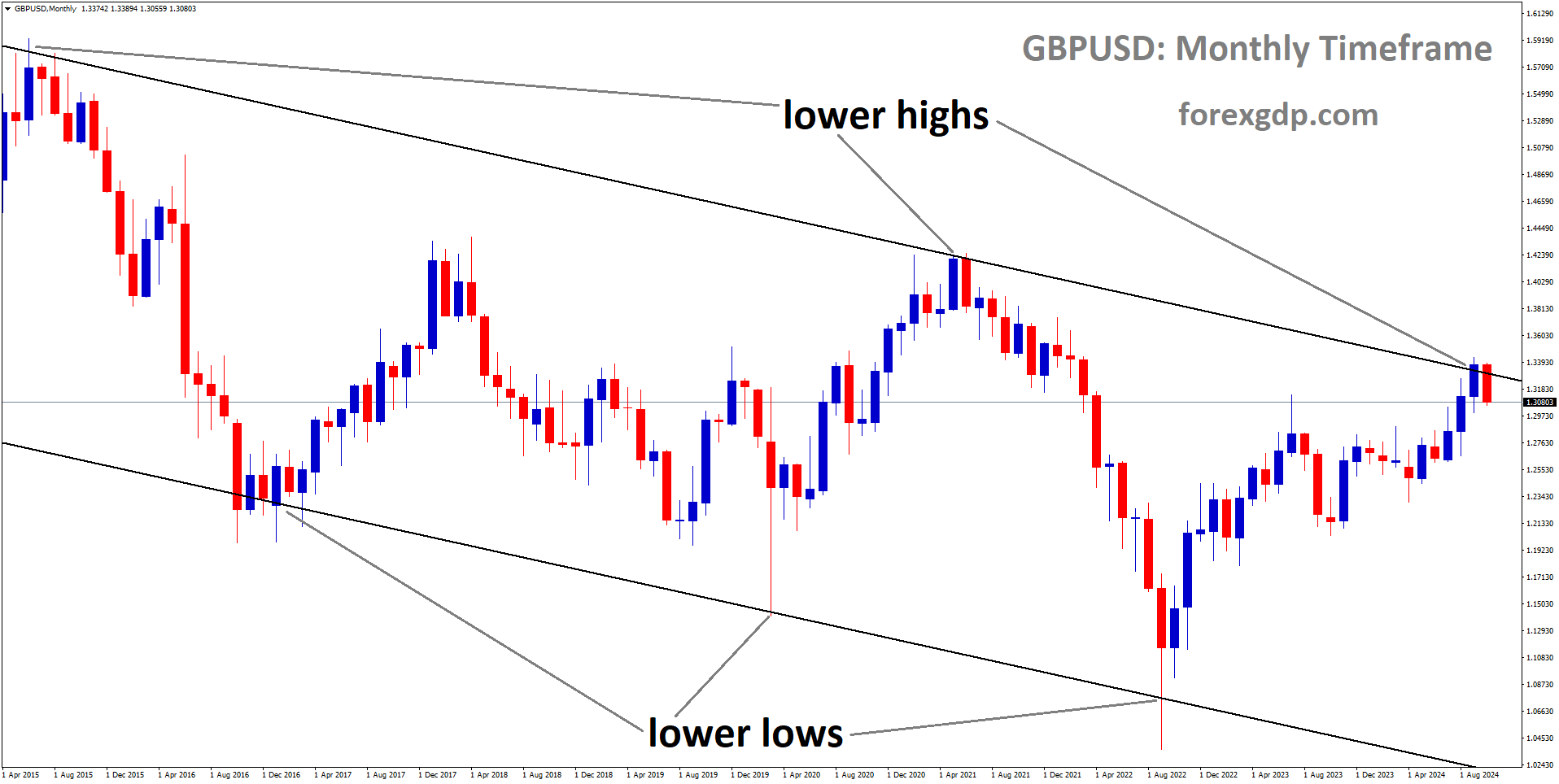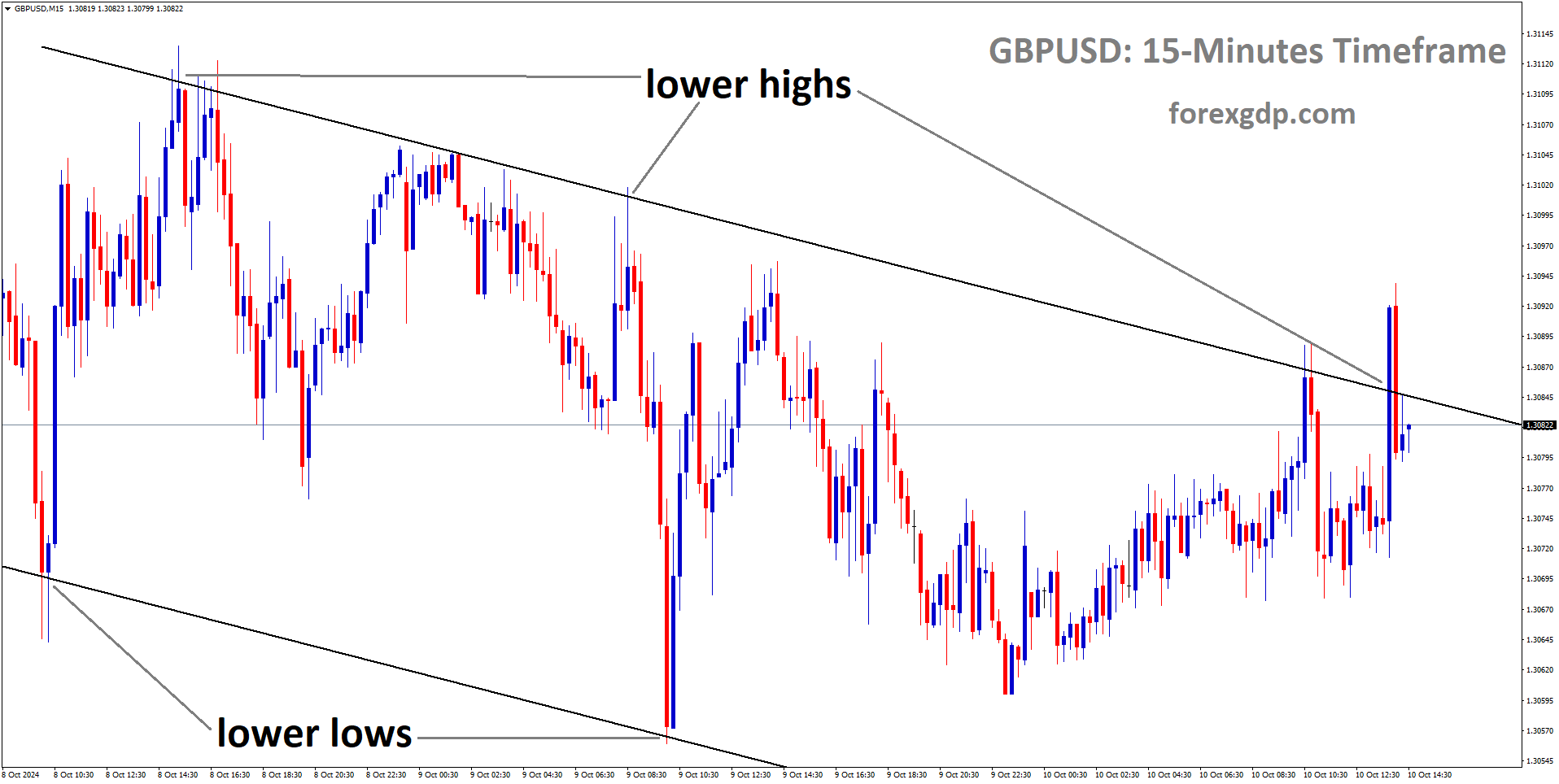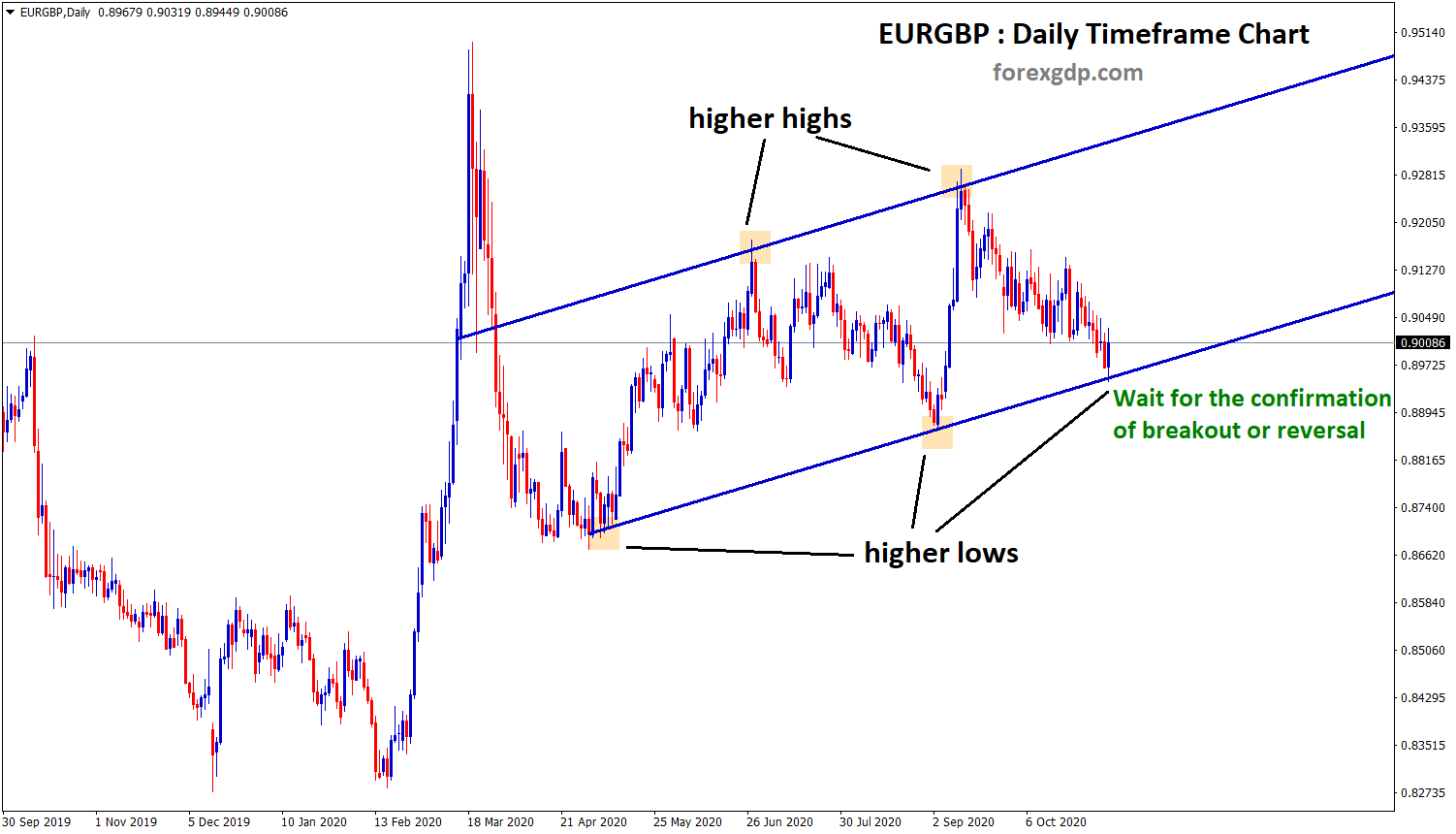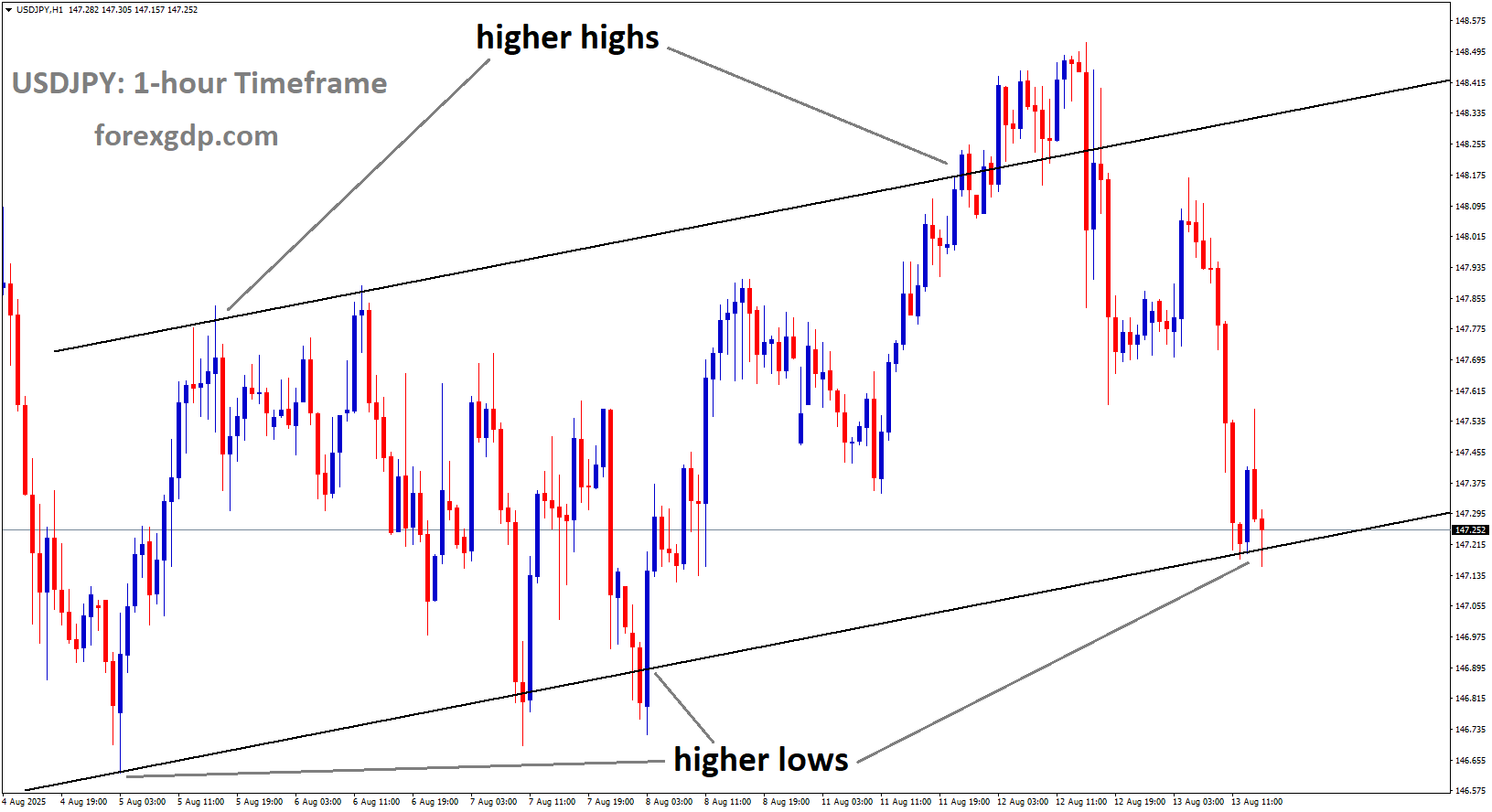GBPUSD is moving in an Ascending channel, and the market has reached the higher low area of the channel
Pound Sterling Faces Pressure as Inflation Concerns Rise: What Investors Should Watch
The Pound Sterling (GBP) has been facing notable challenges against the US Dollar (USD), and much of this tension stems from global economic shifts, particularly in relation to inflation. Investors and traders alike are focused on several key factors that could influence currency movements, including US inflation data and the UK’s economic indicators. In this article, we’ll explore the current landscape, the driving forces behind the pressure on the Pound, and what market participants should keep an eye on in the coming weeks.
Why is the Pound Sterling Struggling?
The GBP has been under pressure recently, and much of this stems from the broader economic uncertainty both in the UK and the US. While the British currency has managed to stay above certain levels, the headwinds it faces are significant. Two of the most crucial factors influencing the currency are inflation data and central bank policies. Let’s break down why these issues matter and how they’re affecting the market.
US Inflation in the Spotlight
One of the key drivers for the current performance of the GBP/USD pair is the looming release of US Consumer Price Index (CPI) data. This inflation data is crucial as it gives insight into price changes for goods and services, excluding more volatile sectors like food and energy. The Federal Reserve (Fed) has a particular interest in these figures, as inflation levels can guide decisions on whether to raise or lower interest rates.
Currently, economists expect the CPI for September to show signs of deceleration, with the annual headline figure possibly falling to 2.3%, down from 2.5% in August. For the month-on-month figure, a smaller increase of 0.1% is anticipated. Core inflation, which removes volatile components, is projected to rise at a modest pace of 3.2%. These numbers are critical because they help shape expectations for the Fed’s future monetary policies.

Inflationary pressure can affect the purchasing power of a currency. If inflation in the US continues to slow, the Fed may feel less inclined to keep interest rates high, which could weaken the USD slightly, giving the Pound some relief.
The Fed’s Influence on the Market
The Federal Reserve’s policies directly impact the global financial markets, and the Pound is not immune. The Fed’s focus is not just on inflation but also on broader economic growth. Recently, there has been growing concern about the US economy slowing down, which has led many to speculate that the Fed may opt for further interest rate cuts. In fact, according to the CME FedWatch tool, market participants are already pricing in a 25 basis point (bps) rate cut in each of the two remaining policy meetings this year.

GBPUSD is moving in a descending channel, and the market has fallen from the lower high area of the channel
But why do interest rates matter so much for currencies? Simply put, higher interest rates tend to attract foreign investors looking for better returns, thus increasing demand for the currency. On the flip side, when rates are cut, it can reduce demand for the currency, making it less attractive and causing it to weaken. For the Pound, if the Fed continues with its rate cuts, it could result in a weaker Dollar, potentially easing some of the pressure on the GBP.
Bank of England’s Role: What to Expect?
The Pound’s performance is not solely dictated by external factors; what happens within the UK also plays a huge role. Investors are closely monitoring the economic data being released in the UK, particularly the monthly Gross Domestic Product (GDP) figures. This data gives a snapshot of how well the economy is performing and whether it’s growing or contracting. Recent estimates suggest that the UK economy expanded by 0.2% in August, showing signs of growth after a flat performance in July.
Alongside GDP data, industrial and manufacturing production numbers are also set to be released. These figures are important because they provide insight into the health of key sectors in the UK economy. Positive growth in these areas could signal that the UK economy is on the mend, which might help the Pound recover some of its lost ground.
Another crucial factor for the GBP is the Bank of England’s (BoE) monetary policy stance. Just like the Fed, the BoE has been adjusting its interest rates in response to inflationary pressures and the broader economic outlook. There is increasing speculation that the BoE might cut interest rates by 25 bps during one of the two remaining meetings this year, either in November or December. These expectations have been fueled by recent comments from BoE Governor Andrew Bailey, who hinted at a potential easing of monetary policy if inflationary pressures continue to decrease.
Wage Growth and Inflation Concerns in the UK
Even though inflation in the UK has shown signs of easing, there are still areas of concern. One of the main worries for the BoE has been rising inflation in the services sector, driven by robust wage growth. In August, the UK’s annual service inflation jumped to 5.6%, up from 5.2% in July, signaling that certain parts of the economy are still experiencing strong price increases.

GBPUSD is moving in a descending channel, and the market has reached the lower high area of the channel
Wage growth is particularly tricky because while higher wages are good for workers, they can also push inflation higher as businesses may raise prices to offset increased labor costs. This can create a cycle of rising prices, which central banks, like the BoE, often aim to control through interest rate adjustments.
Given this backdrop, the BoE faces a challenging decision: should it prioritize curbing inflation, or should it focus on supporting economic growth, which might require lowering interest rates? The outcome of this debate will have a significant impact on the Pound Sterling’s future performance.
What Investors Should Watch Going Forward
As we move through the final quarter of the year, there are several key factors that investors should keep an eye on when considering the GBP/USD currency pair. Here are some of the most important things to watch:
1. Upcoming Inflation Data
Both the US and the UK will be releasing more inflation data in the coming weeks. These figures will be crucial in determining the next moves by their respective central banks. If inflation continues to cool, we could see further interest rate cuts, which may influence currency movements.

2. Central Bank Policy Decisions
The Federal Reserve and the Bank of England both have remaining meetings this year, and their decisions on interest rates will be critical for the GBP/USD pair. Investors will be particularly focused on any signs of dovishness (favoring lower interest rates), as this could impact the strength of the Dollar and the Pound.
3. Economic Growth Indicators
Pay attention to the monthly GDP, industrial production, and manufacturing figures. These indicators give a sense of how well the UK economy is performing and could influence the BoE’s policy decisions moving forward.
Final Thoughts
The Pound Sterling is facing significant pressure against the US Dollar, driven largely by inflation concerns and central bank policies in both the UK and the US. While the Fed’s future rate cuts and the BoE’s potential policy shifts are key areas to watch, the broader economic data will also play a crucial role in determining the direction of the GBP/USD pair. For now, it’s a waiting game for investors as they monitor these factors closely.
Don’t trade all the time, trade forex only at the confirmed trade setups
Get more confirmed trade signals at premium or supreme – Click here to get more signals , 2200%, 800% growth in Real Live USD trading account of our users – click here to see , or If you want to get FREE Trial signals, You can Join FREE Signals Now!





